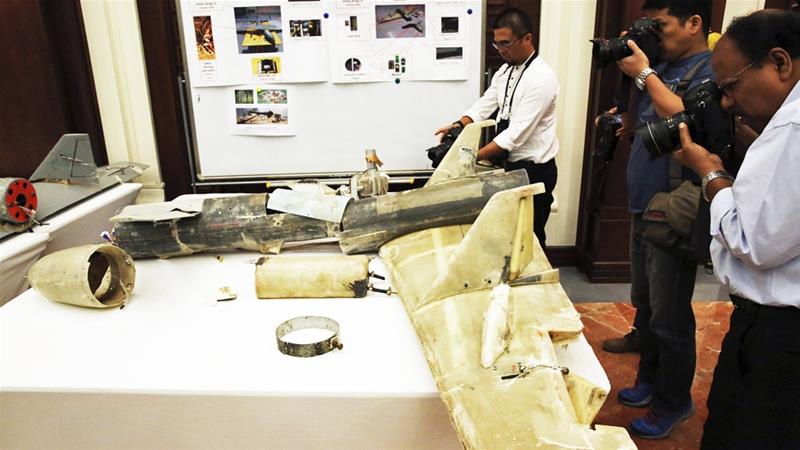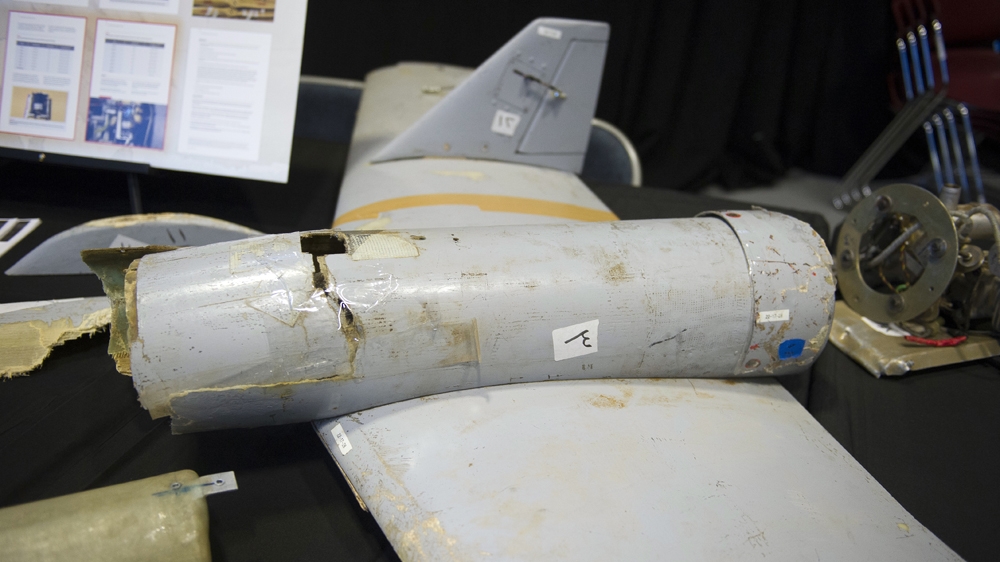by Alex Gatopoulos
 Drone attacks on a Saudi oil pipeline west of Riyadh on Tuesday have revealed an apparent significant leap in the capabilities of the Ansar Allah fighting group, otherwise known as the Houthis.
Drone attacks on a Saudi oil pipeline west of Riyadh on Tuesday have revealed an apparent significant leap in the capabilities of the Ansar Allah fighting group, otherwise known as the Houthis.
The Aramco East-West pipeline, stretching across the country to the port and oil terminal at Yenbu, was damaged in two places as pumping stations were hit.
The attacks caused minor damage but alarmed an international community already rattled by the sharp downturn in relations between Iran and the United States.
Information on the attacks is scarce, posing more questions than providing answers.
Signs of sophistication
Drones have been increasingly used by the Houthis in operations against the Saudi-UAE-led coalition. In July 2018 a drone exploded at Abu Dhabi airport causing only minor damage but sending a message to the UAE that its economic interests were not invulnerable.
In January 2019, a senior intelligence chief, along with several officers, were killed at the al-Anad air force base just outside Aden by a weaponised drone that exploded above the delegation.
In March the Houthis released video footage of a drone flying past Saudi's al-Shuqaiq water treatment and power plant, 130km from the Yemeni border.
It was not attacked but the warning was clear, with water being a vulnerable resource and many Middle Eastern countries relying heavily on desalination plants.
How have Houthis achieved this?
Analysts are divided about the extent of the help given to the Houthis by Iran.
A UN report submitted to the UN Security Council in January 2018 found compelling evidence that locally produced drones had an almost identical build and capability as the Iranian Qasef-1 UAV, or unmanned aerial vehicle.

The remains of an Iranian Qasef-1 drone, used as a one-way attack UAV to dive on targets [Cliff Owen/AP]
This drone is GPS-guided to its target, often diving into the target to cause damage.
While the Houthis have leant heavily on Iranian help in the past, Houthi drones have increasingly used parts that are commercially available in the international market, with the conflict itself acting as a catalyst for design innovations.
Sami Hamdi, editor-in-chief of the International Interest periodical, is not surprised that drones are being used in increasing numbers.
"[The Houthis] claim they are creating their own drones, that they've learnt how to make them. Outside of the war of Yemen, for example in Iraq, we've also seen this among Kurdish forces. They too have been able to create their own drones and use them ...
"So, it is not particularly strange that we find drones among the Houthis. Let us also not forget that they are backed logistically by the Iranians who continue to provide them with expertise on how to develop some of these weapons," Hamdi added.
What is different about these drones?
This latest attack signifies a big jump in abilities as the drone flew more than 800km into Saudi Arabia to successfully attack its target.
The drone was guided using satellite technology, as beyond a certain range, drones need a satellite data link for information to be sent back to the pilot.
Who can secure shipping lines in the Gulf? (24:30)
Satellites technically allow drones to be flown from halfway around the world, as many military drones are, but they also need a second pilot station with line-of-sight access to take off and land.
The is due to the delay in satellite communications - albeit minor - which causes delays that can be fatal for a drone coming in to land.
The Iranians and Houthis have no known communications satellites and would need to rely on commercially available satellite space.
All this means that imagery analysts, communications experts, uplink engineers, two-pilot crews, armourers and mechanics all need to work in unison for an attack to succeed.
This implies increasingly sophisticated levels of training.
Why did Saudi Arabia fail to detect them?
A slow, unstealthy aircraft was able to fly for several hours deep into Saudi Arabia, and was not detected and intercepted in a time of war.
This will ring alarm bells, as retired Jordanian air force general Mamour al-Nowar told Al Jazeera.
"Their air defence system completely failed to handle such attacks" and the Houthis now have the ability "to reach Riyadh and Abu Dhabi," potentially paralysing the country "if they hit desalination water pumping stations or the [almost built] nuclear plant in Abu Dhabi".
Why this target?
Analysts are divided on whether the pipeline attack and the earlier alleged sabotage attacks against the tankers off the coast of the Emirati port of Fujairah are linked in some way.
Oil and gas economist Cornelia Meyer is emphatic that a link is tangible: "Absolutely, and what that tells me is that it's not just an isolated rebel group doing this, it's a very well-orchestrated campaign."
Hamdi is more cautious: "The circumstances of the sabotage attacks off Fujairah aren't quite clear yet. The Houthis have announced that they are the ones responsible for the Riyadh attack but as far as I'm aware no one has claimed responsibility for the act on the tankers in Fujairah."
Initial US investigation 'blames Iran for UAE ship attacks' (1:48)
The pipeline is an interesting target for several reasons; it is on the same latitude as Riyadh, which means the Saudi capital is within range.
It is also a graduated escalation, avoiding mass casualties and aiming at economic interests. While the damage was minimal, a warning was sent nevertheless.
The pipeline itself was built during the Iran-Iraq war as an alternative to Saudi Arabia should the Strait of Hormuz be closed for any reason, as was the oil terminal at the Emirati port of Fujairah.
The message sent, according to military analyst Elias Farhat, is that "it is not safe" for either the UAE or Saudi Arabia "to bypass the Strait of Hormuz".
Despite the minor damage in the attack, there is now increasing concern that, given the current tension, small acts of military violence could spark a regional conflict.
No comments:
Post a Comment